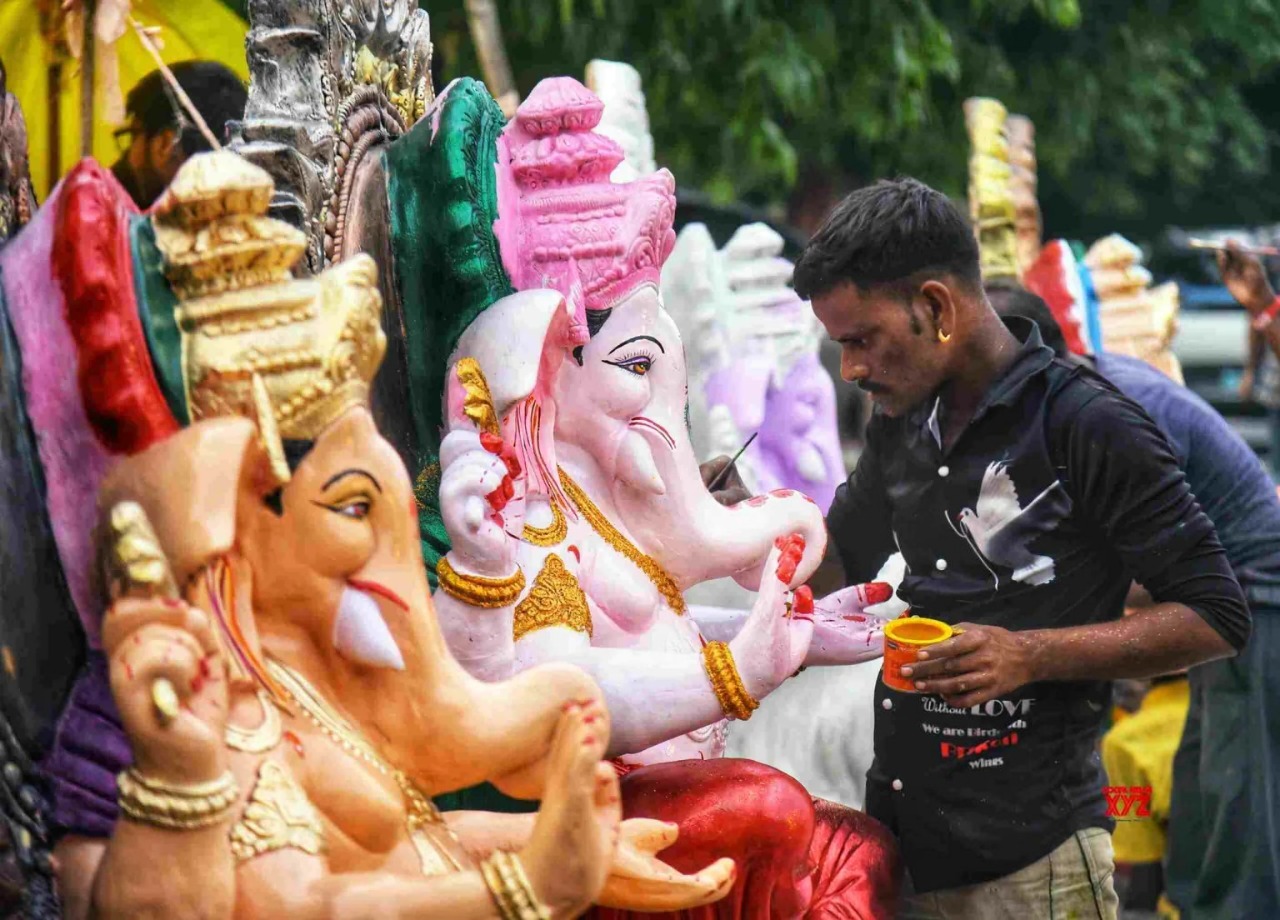Mangaluru: With Ganesh Chaturthi on, artisans across India are redefining the art of crafting Lord Ganesha idols, blending tradition with innovation to create eco-friendly and visually stunning masterpieces. From sustainable materials to contemporary designs, these skilled craftsmen are adapting to modern demands while preserving cultural heritage.
Innovations in Style and Sustainability
Modern and Minimalist Designs Artisans are moving beyond traditional depictions to create minimalist and contemporary Ganesha idols. In Bengaluru, artisan Priya Sharma is leading the charge with sleek, symmetrical Ganeshas that resonate with younger devotees. “We’re moving beyond ornate designs to create sleek, symmetrical idols with natural colors that evoke calm and spirituality,” says Sharma, whose workshop has seen a surge in demand for eco-friendly idols. These creations, made from biodegradable Shadu Mati clay and vegetable-based dyes, dissolve harmlessly in water, significantly reducing environmental impact. In Ahmedabad, artisans experiment with vibrant fabrics, beads, and mirrors, creating dazzling idols that blend tradition with a contemporary flair.
Regional Artistic Influences The craft is also a canvas for regional artistry. In Chennai, veteran artisan Rajesh Kumar incorporates Dravidian motifs into his paper-mâché and clay idols. “Our Ganeshas wear temple-style headpieces, reflecting Tamil Nadu’s rich heritage,” Kumar explains. In Jaipur, marble Ganeshas with Rajasthani motifs are gaining popularity, while Goa’s Kumbharwada artisans are embracing locally sourced clay and seed-infused idols that can be planted post-immersion. “Our Bappa’s Tree idols symbolize renewal,” says artisan Anita Naik. “After worship, you plant the idol, and it grows into a sapling. It’s our way of giving back to nature.”

The Rise of Eco-Conscious Materials A growing environmental awareness is the driving force behind the shift in materials. Many artisans have replaced Plaster of Paris (PoP) with biodegradable options like natural clay, rice flour, and newspaper clay. “The use of clay idols has a greater significance in religious texts, and veteran artisans have stuck with them,” says Ramachandra Rao, a traditional artisan from Mangaluru. “Hence our idols can be safely immersed in lakes, rivers, and other water bodies and will cause no water pollution.”
This commitment to sustainability is evident in the rise of unique, edible idols made from chocolate or rice flour dough, which are gaining traction as a fun and unique twist on the tradition.

The Human Touch: Challenges and Opportunities
Despite these innovations, challenges persist. “Clay costs are rising, and mass-produced Plaster of Paris idols are cheaper,” laments Hubballi artisan Sanjay Patil. “But people are starting to value eco-friendly craftsmanship.” This shift in consumer behavior is creating new opportunities. E-commerce platforms are helping artisans reach wider audiences, offering a diverse range of customizable idols.
Beyond the business, the craft remains a deeply personal and spiritual journey for many. “I am not into this job to earn profit,” says 80-year-old Damodar Shenoy from Mangaluru, who has been making idols for over six decades. “Lord Ganesha himself is my Guru and my passion for creating the idol increases with each passing year.” This sentiment is shared by many who see their work as a form of devotion. “The true offering to Ganesha is not flowers or sweets, but sincerity in devotion,” one artisan expressed.
Community and educational initiatives are also playing a crucial role. Organizations and schools are hosting workshops to promote biodegradable idols. “It’s heartening to see communities embrace sustainable practices,” says Meena Rao, an organizer in Mysuru, where nearly 100 artisans have united to craft eco-friendly Ganeshas. “We’re teaching the next generation to honor tradition while protecting our planet.”





